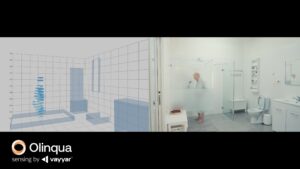Australian hospital corridors echo with the sounds of duress codes. In South Australia alone, an average of 36 violent incidents occur every day, with nurses and clinicians often at the receiving end (1). The violent incidents happen unexpectedly and can last from seconds to several minutes. The Health Workers Union highlights that in most states, hospital staff lack uniform training on self-protection and handling violence (2), emphasising the urgent need for proactive protective strategies.
The Alarming Statistics
Healthcare staff, according to the Center for Personal Protection & Safety, face a risk of workplace violence 16 times greater than other service sectors (3). Yet only one in five cases of verbal abuse or physical altercations ever become exposed(4). This widespread issue not only threatens the safety of healthcare workers, but it directly impacts the standard of patient care.
In 2022, a review found that occupational violence and aggression affect an estimated 95% of healthcare workers in Australia, particularly in urgent and critical care settings in rural health services. This widespread issue poses physical and psychological risks for healthcare workers, leading to financial implications for organisations, including absenteeism, work incapacity claims, and safety improvement costs (5). Younger females, who make up a significant portion of nursing staff have been especially at risk, and the financial implications of these claims are considerable, with millions claimed in compensation for health damages (6).
A Plan for Intervention
Considering these stats, hospitals must adopt measures that support prevention, early intervention, and post-incident protocols. This journey begins with health organisations that provide their workers with practical assistance in dealing with violent incidents (7). Training hospital staff like security personnel, porters, switchboard operators, and emergency response teams, who are often at the forefront of defence against potential threats is vital. However, they need the right information at the right time on the right device to be effective. Modern technology can bridge this gap, ensuring real-time, accurate information reaches the right personnel during high-risk incidents.
Better Duress Response
Hospitals can better coordinate the response during high-risk incidents by integrating existing infrastructure, like security systems and nurse calls, with newer technologies, such as automation platforms and command centres. Modern technologies enable swift reactions and streamline protocol adherence in duress situations. This strategy uplifts patient care standards and provides a safety net for at-risk hospital staff.
“In incidents where a clinician faces physical threats or violence from patients – they need access to a solution that works very fast and alerts operational team members like the security team of their location in seconds – to prevent permanent injuries or worse. Hospital staff must be confident that effective measures are in place for when a critical situation arises, effectively giving them the peace of mind to do their job.
However, without real-time alert technology, hospitals risk legal repercussions, financial burdens, and a tarnished reputation, making it challenging to attract talented medical professionals. A compromised safety environment can also lead to decreased staff morale, reduced focus on patient care, and operational disruptions. Ensuring the safety of clinicians is not just a moral obligation but crucial for maintaining operational efficiency,” says David Pare, Chief Technology Officer at Olinqua.
Code Duress: The Tech
Advantage
A mobile duress solution should protect all hospital staff, whether they’re admitting patients or walking to the theatre. Pressing a button discretely on the duress tag should enable staff to raise an alarm silently and instantly. This action should deliver notifications to the right personnel on their preferred mobile device or communication method to alert them of the critical situation and respond urgently.
The hospital should have a system to monitor incidents, including response times and protocol adherence, from the first sign of duress. Post-incident, the technology should offer insights into the event, highlighting areas of consideration and ensuring continuous improvement. Technology that automates and monitors responses for duress management aligns with the broader goal of creating safer hospital environments.
The investment needed for operational technology to improve duress management is a fraction of the cost of a clinical solution. Powerful automation platforms that enable complex integrations can be adopted gradually. The open platform model ensures these solutions grow with the hospital, tailored to their broader technology ecosystem. Hospitals can start with what matters most by addressing staff safety. They can then expand the use of their automation platform’s capability to include task management, environment monitoring and asset tracking for more efficient hospital operations.
About Olinqua
Olinqua is an Australian health technology company committed to enhancing global healthcare standards. We offer a platform designed for hospitals that supports collaboration and communication applications powered by a real-time integration and automation engine. To explore our automation platform for hospitals, visit us at olinqua.com/contact/.



